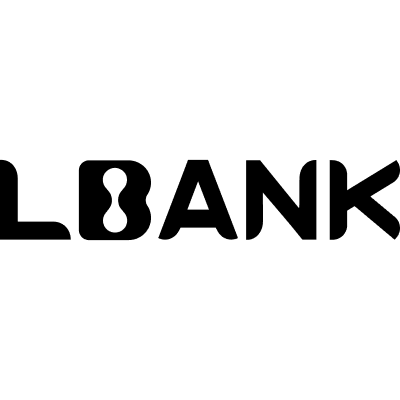– Ad –
| Getting your Trinity Audio player ready... |
Crypto peer-to-peer (P2P) lending is revolutionizing the financial landscape by providing decentralized, transparent, and accessible lending options. As the world of cryptocurrency evolves, so does the realm of P2P lending, bringing forth innovative trends that promise to reshape traditional financial systems. This article explores the emerging trends in crypto P2P lending, highlighting its key features, advantages, challenges, and future prospects.
- What is Crypto Peer-to-Peer Lending?
- Historical Context of Crypto Peer-to-Peer Lending
- Key Features of Crypto Peer-to-Peer Lending
- Advantages of Crypto Peer-to-Peer Lending
- Challenges in Crypto Peer-to-Peer Lending
- Emerging Trends in Crypto Peer-to-Peer Lending
- Integration with Decentralized Finance (DeFi)
- Use of Stablecoins in P2P Lending
- Institutional Involvement in Crypto P2P Lending
- Regulatory Frameworks and Their Development
- Security Measures in Crypto P2P Lending
- Case Studies of Successful Crypto P2P Lending Platforms
- The Future of Crypto Peer-to-Peer Lending
- How to Get Started with Crypto P2P Lending
- Risks and Mitigation Strategies
- Comparing Crypto P2P Lending with Traditional P2P Lending
- Expert Opinions on Crypto Peer-to-Peer Lending
- Conclusion
- FAQs
What is Crypto Peer-to-Peer Lending?
Crypto P2P lending is a decentralized financial process where borrowers and lenders engage directly through a platform, using cryptocurrencies as collateral or loan currency. This method bypasses traditional financial intermediaries like banks, offering a more accessible and cost-effective alternative for both parties. Unlike conventional lending, crypto P2P lending leverages blockchain technology to enhance security, transparency, and efficiency.
Historical Context of Crypto Peer-to-Peer Lending
The concept of P2P lending dates back to the early 2000s, but its integration with cryptocurrency emerged in the late 2010s. Initially, it was a niche market, but as blockchain technology advanced and cryptocurrencies gained mainstream attention, crypto P2P lending began to grow. Over the years, it has evolved into a sophisticated financial service, attracting a diverse range of participants, from individual investors to large institutions.
Key Features of Crypto Peer-to-Peer Lending
Decentralization: One of the core principles of crypto P2P lending is decentralization. By eliminating the need for intermediaries, the process becomes more streamlined and accessible, allowing users to directly negotiate loan terms.
Security: Blockchain technology ensures high levels of security. Transactions are recorded on a public ledger, making them transparent and immutable, which significantly reduces the risk of fraud.
Accessibility: Crypto P2P lending platforms are available to anyone with internet access, providing financial services to underbanked and unbanked populations worldwide.
Transparency: The use of smart contracts and blockchain technology ensures that all transactions are transparent and verifiable, fostering trust among users.
Also Read: Best Crypto Peer-to-Peer Lending Platforms to Watch in 2025
Advantages of Crypto Peer-to-Peer Lending
Lower Fees: Without traditional financial intermediaries, transaction fees are significantly reduced, making loans cheaper for borrowers and more profitable for lenders.
Fast Transactions: Blockchain technology enables near-instantaneous transactions, eliminating the delays typically associated with traditional banking processes.
Inclusive Access: Crypto P2P lending platforms offer financial services to a global audience, including those in regions with limited access to traditional banking.
Flexible Terms: Borrowers and lenders can negotiate terms that suit their needs, offering more flexibility than conventional loans.
Challenges in Crypto Peer-to-Peer Lending
Regulatory Uncertainty: The regulatory landscape for cryptocurrencies is still evolving. Uncertainty around regulations can pose challenges for both platforms and users.
Security Risks: Despite blockchain’s security features, crypto P2P lending platforms are not immune to hacking and fraud, which can result in significant losses.
Volatility of Cryptocurrencies: The value of cryptocurrencies can be highly volatile, posing risks for both borrowers and lenders in terms of loan repayment and collateral value.
Limited Awareness and Understanding: Many potential users are still unfamiliar with how crypto P2P lending works, which can hinder its adoption.

Emerging Trends in Crypto Peer-to-Peer Lending
Integration with Decentralized Finance (DeFi): DeFi platforms are integrating P2P lending services, creating new financial products and opportunities for users. This synergy enhances liquidity and expands the functionality of both ecosystems.
Use of Stablecoins: Stablecoins, which are pegged to traditional currencies, are increasingly being used in P2P lending to mitigate the risks associated with cryptocurrency volatility.
Increased Institutional Involvement: Institutional investors are entering the crypto P2P lending market, bringing more capital and credibility to the space.
Development of Regulatory Frameworks: Governments and regulatory bodies are beginning to establish clearer guidelines for crypto P2P lending, which can provide more stability and security for the market.
Improved Security Measures: Enhanced security protocols, such as multi-signature wallets and advanced encryption, are being implemented to protect users and their assets.
Integration with Decentralized Finance (DeFi)
The integration of P2P lending with DeFi is one of the most significant trends in the crypto lending space. DeFi platforms use smart contracts to automate and secure financial transactions, including loans. This integration allows for more complex financial products, such as flash loans and yield farming, to be offered on P2P lending platforms.
Innovations and Use Cases
DeFi integration has led to the creation of innovative financial products that were previously impossible. Flash loans, for example, allow users to borrow and repay loans within the same transaction, provided certain conditions are met. Yield farming involves providing liquidity to DeFi platforms in exchange for interest, which can be significantly higher than traditional savings accounts.
Use of Stablecoins in P2P Lending
Stablecoins, such as USDT, USDC, and DAI, are gaining popularity in the P2P lending market due to their price stability. These digital assets are pegged to traditional currencies like the US dollar, reducing the risk of volatility.
Benefits of Stablecoins
Stablecoins offer the benefits of cryptocurrencies, such as fast transactions and low fees, without the associated volatility. They provide a reliable medium for loans and collateral, making them attractive for both borrowers and lenders.
Popular Stablecoins Used in Lending
USDT (Tether), USDC (USD Coin), and DAI are among the most commonly used stablecoins in crypto P2P lending. These coins are widely accepted and have established trust within the crypto community.
Institutional Involvement in Crypto P2P Lending
Institutional investors, such as hedge funds and venture capital firms, are increasingly participating in the crypto P2P lending market. Their involvement brings more capital into the space, enhancing liquidity and market stability.
Growth of Institutional Participation
The entry of institutional players is a sign of maturity for the crypto P2P lending market. These investors are attracted by the high returns and innovative financial products offered by P2P lending platforms.
Impact on the Market
Institutional involvement can lead to greater market stability and increased adoption of crypto P2P lending. It also brings more regulatory scrutiny, which can help establish clearer guidelines and protections for users.
Regulatory Frameworks and Their Development
The regulatory landscape for crypto P2P lending is still developing. Governments and regulatory bodies are actively working to create comprehensive frameworks to govern this emerging market.
Current Regulatory Landscape
As of now, the regulatory environment for crypto P2P lending is fragmented and varies significantly by country. In some regions, such as the United States and the European Union, regulators are actively working to create comprehensive frameworks. Meanwhile, other regions are still in the early stages of understanding and legislating the implications of this technology.
Future Regulatory Trends
The future is likely to see more harmonized regulatory approaches as international bodies collaborate to address the global nature of crypto finance. Expected trends include standardized Know Your Customer (KYC) and Anti-Money Laundering (AML) requirements, clearer taxation rules, and specific regulations tailored to address the unique challenges of crypto assets.
Security Measures in Crypto P2P Lending
Enhanced Security Protocols
To combat security risks, platforms are adopting advanced security measures. These include two-factor authentication (2FA), encryption, and regular security audits. Multi-signature wallets, which require multiple approvals for transactions, add an additional layer of security.
Role of Blockchain Technology
Blockchain inherently offers high security due to its decentralized and immutable nature. Smart contracts ensure that terms are executed exactly as programmed, without the need for intermediaries.
Best Practices for Users
Users should follow best practices such as using hardware wallets for storing crypto assets, conducting due diligence before investing, and staying updated with the latest security developments. Awareness and education are key to minimizing personal risk.
Case Studies of Successful Crypto P2P Lending Platforms
Aave
Aave is a leading DeFi protocol that has successfully integrated P2P lending with a broad range of innovative features. Launched in 2017, Aave offers both lending and borrowing services in various cryptocurrencies. The platform is known for introducing flash loans, which allow users to borrow and repay loans within a single transaction. Aave has grown significantly, with a total value locked (TVL) exceeding $5 billion as of 2023. Its decentralized nature and robust security measures make it a popular choice among users.
Compound
Compound is another prominent DeFi lending platform that enables users to earn interest on their crypto assets by supplying them to the protocol. Launched in 2018, Compound automatically adjusts interest rates based on supply and demand. The platform’s governance token, COMP, allows users to participate in decision-making processes, promoting a decentralized and community-driven approach. With a TVL of over $4 billion, Compound has become a cornerstone of the DeFi ecosystem.
BlockFi
BlockFi is a centralized crypto lending platform that bridges the gap between traditional finance and the crypto world. Launched in 2017, BlockFi offers high-yield interest accounts and low-cost loans using cryptocurrency as collateral. The platform has raised significant capital from institutional investors, reflecting growing confidence in the crypto lending market. BlockFi’s regulatory compliance and strong security protocols make it a trusted platform for both retail and institutional investors.
The Future of Crypto Peer-to-Peer Lending
Predictions and Projections
The future of crypto P2P lending looks promising, with continuous growth in user adoption and technological advancements. Analysts predict that the market will expand as more individuals and institutions recognize the benefits of decentralized lending. Innovations in blockchain technology, such as improved scalability and interoperability, will likely enhance the efficiency and accessibility of P2P lending platforms. Furthermore, the development of more sophisticated financial products and services within the DeFi ecosystem is expected to attract a broader user base.
Potential Impact on Global Financial Systems
As crypto P2P lending becomes more mainstream, it could significantly impact global financial systems by providing more inclusive and accessible financial services. This innovative lending method can help bridge the gap between traditional finance and underserved populations, promoting financial inclusion. By offering lower fees, faster transactions, and flexible terms, crypto P2P lending has the potential to democratize access to credit and investment opportunities, particularly in regions with limited banking infrastructure.
How to Get Started with Crypto P2P Lending
Choosing a Platform
Start by researching various platforms to find one that suits your needs. Consider factors such as security measures, fees, available cryptocurrencies, and user reviews. Look for platforms that have a strong reputation and track record of successful transactions. Additionally, evaluate the platform’s user interface and customer support to ensure a smooth and user-friendly experience.
Creating an Account
Once you have chosen a platform, sign up and complete the verification process, which typically involves providing identification and complying with Know Your Customer (KYC) regulations. Ensure that you understand the platform’s terms and conditions, as well as any fees associated with lending and borrowing.
Making Your First Loan
After setting up your account, deposit the cryptocurrency you wish to lend. Browse available loan requests, evaluate the terms, and choose a suitable borrower. Use the platform’s tools to track your loan’s progress and repayments. It’s important to diversify your investments to spread risk and maximize returns.
Tips for Success
- Diversify: Spread your investments across multiple loans and platforms to minimize risk.
- Stay Informed: Keep up with market trends and regulatory developments to make informed decisions.
- Conduct Due Diligence: Research borrowers and platforms thoroughly to assess credibility and performance history.
- Use Secure Storage: Store your cryptocurrency in secure wallets to protect against hacks and theft.
Risks and Mitigation Strategies
Understanding Risks
Be aware of the risks involved in crypto P2P lending, including market volatility, platform security, and borrower default. The value of cryptocurrencies can fluctuate significantly, which can impact the value of loans and collateral. Additionally, the security of lending platforms is crucial to prevent hacking and fraud.
Diversification
Spread your investments across multiple loans and platforms to minimize risk. Diversification helps mitigate the impact of any single loan defaulting and provides a balanced portfolio that can weather market volatility.
Due Diligence
Conduct thorough research on borrowers and platforms. Use tools provided by platforms to assess borrower credibility and track their loan performance history. Evaluate the security measures and reputation of the platform before investing.
Comparing Crypto P2P Lending with Traditional P2P Lending
Key Differences
Traditional P2P lending involves fiat currencies and is regulated by national financial authorities. It typically operates through centralized platforms that facilitate transactions between borrowers and lenders. Crypto P2P lending, on the other hand, uses cryptocurrencies and operates on blockchain technology, offering enhanced security, transparency, and efficiency. This decentralized approach eliminates intermediaries and reduces costs.
Pros and Cons of Each
- Traditional P2P Lending: Benefits from regulatory oversight and lower volatility but lacks the decentralization and flexibility of crypto P2P lending.
- Crypto P2P Lending: Provides higher potential returns and global access but comes with higher risks related to volatility and regulatory uncertainty. The use of blockchain technology offers added security and transparency.
| Feature | Crypto P2P Lending | Traditional P2P Lending |
| Currency | Cryptocurrencies (Bitcoin, Ethereum, Stablecoins) | Fiat currencies (USD, EUR, etc.) |
| Regulation | Emerging, varies by country, less regulated | Well-established, regulated by financial authorities |
| Intermediaries | None, decentralized platforms | Centralized platforms act as intermediaries |
| Transaction Speed | Near-instantaneous due to blockchain technology | Slower, subject to banking hours and processes |
| Fees | Generally lower, minimal transaction fees | Higher, includes platform and banking fees |
| Security | High, blockchain provides transparency and immutability | Moderate, depending on the platform’s security measures |
| Accessibility | Global access, available to anyone with internet and crypto | Region-specific, dependent on banking infrastructure |
| Volatility | High, dependent on cryptocurrency market fluctuations | Low, stable fiat currencies |
| Transparency | High, all transactions are recorded on a public ledger | Moderate, platform-dependent |
| Interest Rates | Potentially higher, determined by market supply and demand | Generally lower, determined by platform policies |
| Risk of Default | Variable, mitigated by smart contracts and collateralization | Moderate, depends on borrower creditworthiness |
| Market Maturity | Emerging, rapidly evolving | Mature, well-established |
| Innovation | High, frequent introduction of new financial products | Moderate, slower pace of innovation |
| User Control | High, direct interaction between lenders and borrowers | Lower, mediated by platform operators |
| Geographic Restrictions | Few, limited only by cryptocurrency regulations | Significant, depends on platform’s operating regions |
| Loan Terms Flexibility | High, customizable terms | Standardized, less flexible |
Expert Opinions on Crypto Peer-to-Peer Lending
Interviews with Industry Experts
Insights from industry leaders highlight the innovative potential of crypto P2P lending. Experts emphasize the importance of regulatory clarity and security advancements for sustained growth. For instance, Sergey Nazarov, co-founder of Chainlink, notes that decentralized finance platforms, including P2P lending, are paving the way for a more inclusive financial system.
Expert Predictions and Insights
Many experts predict that as technology and regulation evolve, crypto P2P lending will become a significant part of the global financial ecosystem. It is expected to drive innovation and financial inclusion, particularly in developing countries. Additionally, advancements in blockchain technology and smart contracts will likely lead to more sophisticated and secure lending platforms.
Conclusion
Crypto peer-to-peer lending is an innovative and rapidly evolving sector that offers numerous benefits over traditional lending methods. With its decentralized nature, enhanced security, and global accessibility, it has the potential to revolutionize the financial industry. As emerging trends such as DeFi integration, the use of stablecoins, and increased institutional involvement continue to shape the market, the future of crypto P2P lending looks promising. By understanding the advantages and challenges, and following best practices, users can effectively navigate this dynamic landscape and leverage the opportunities it presents.
FAQs
Is crypto P2P lending safe?
Crypto P2P lending can be safe if you choose reputable platforms, use robust security practices, and stay informed about potential risks. However, like any investment, it carries inherent risks.
What are the main benefits of crypto P2P lending?
The main benefits include lower fees, fast transactions, global accessibility, and flexible lending terms. Additionally, it provides opportunities for higher returns compared to traditional P2P lending.
How do I choose the right platform?
Evaluate platforms based on security measures, user reviews, available cryptocurrencies, fees, and regulatory compliance. Look for platforms with a strong track record and transparent operations.
Can I use any cryptocurrency for P2P lending?
Most platforms support major cryptocurrencies like Bitcoin, Ethereum, and stablecoins. However, the availability of specific cryptocurrencies may vary by platform.
What are the tax implications?
Tax regulations for crypto P2P lending vary by country. It’s essential to understand the tax laws in your jurisdiction and consult with a tax professional to ensure compliance.
How do I minimize risks?
To minimize risks, diversify your investments, conduct thorough research, use secure storage methods for your assets, and stay updated with the latest developments in crypto and security practices.

















